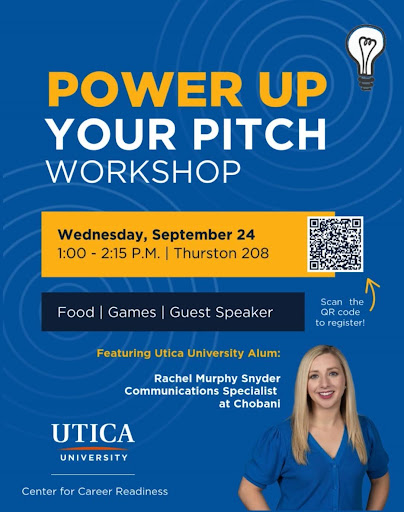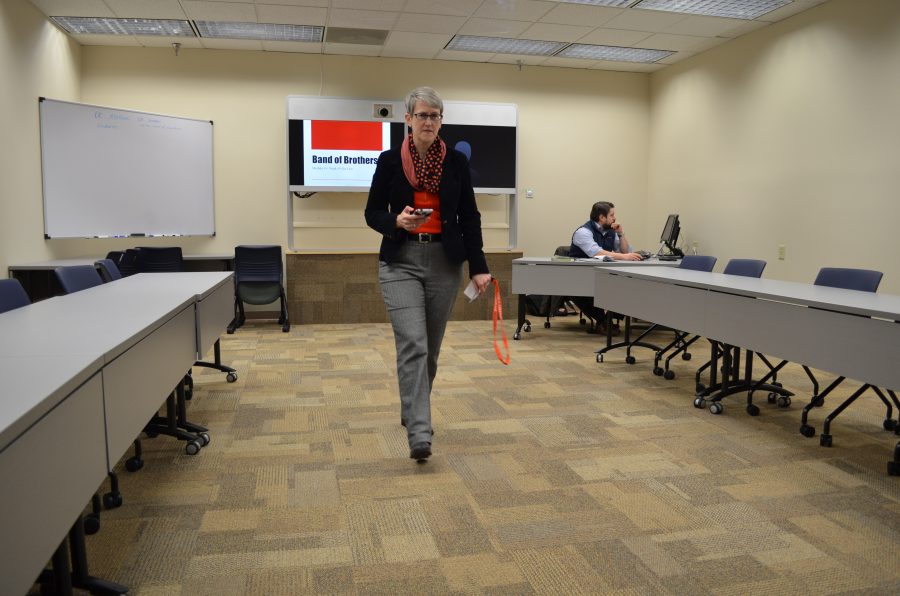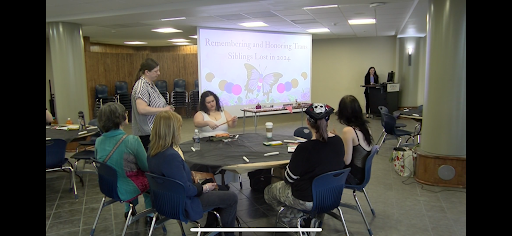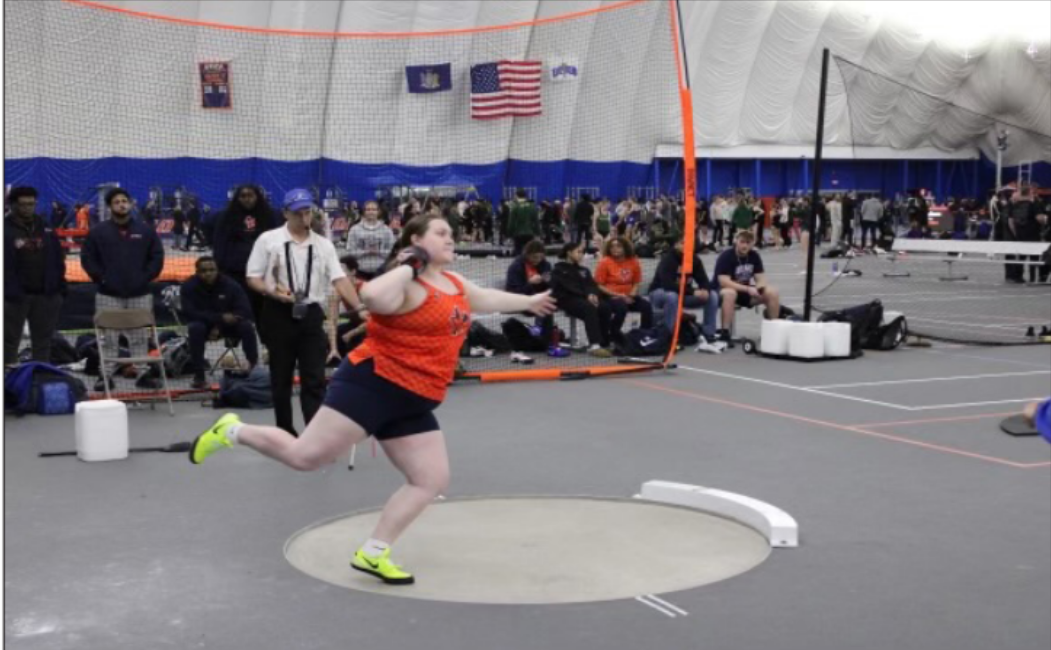Matt Rogers, Co-Editor-in-Chief
About 15 students attended a Business 611 class on a recent Wednesday afternoon, a core requirement in Utica College’s new M.B.A. program. But those were just the students that were there in person. Others, from as far away as South Carolina or Florida were also present, but just not in the way most people would think of.
The class took place at what UC is referring to as a “super smart classroom,” located at Clark City Center in downtown Utica. The classroom features cameras, computers, and microphones to fully immerse students, whether they are there in person, or participating remotely from their living room.
“It gives ultimate access to students,” Stephanie Nesbitt, director of the M.B.A. program, and the professor for that Business 611 class, said. “If you can’t make it, you can come in through the portal. If you can’t make it through the portal, you can watch it later. It makes us really unique.”
These classrooms have only been in operation for a short period of time and were created in order for the college to differentiate itself in the market. The way they did it, according to Dean of Business and Justice Studies James Norrie and others, was to create a truly blended program.
Though only two courses utilize the classroom at this point, they both create the ultimate flexibility for M.B.A. students, most of whom are working full-time jobs. Students have the ability to participate in the class either in person or remotely. For those sitting in on class from afar, the technology makes them feel like they are actually in the room.
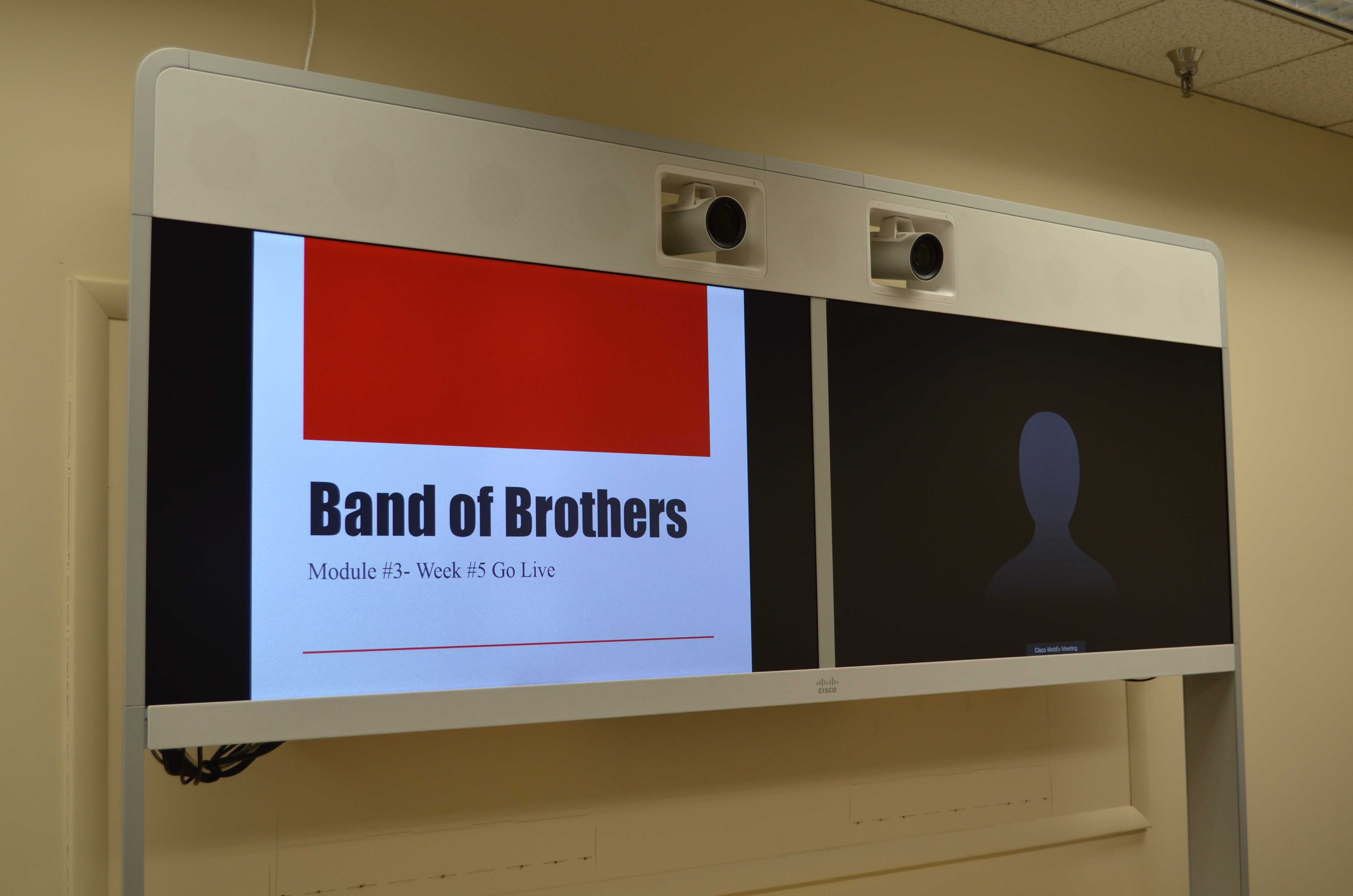
Sophisticated technology, manned by Educational Experience Coordinator Matt Marmet, makes it all come together. The cameras in the room are based on voice recognition. Therefore, if a student in the classroom makes a comment, the camera recognizes that student’s voice, and focuses on that person. The student watching from home takes in the class just how they would if there were actually at Clark City Center.
“I was amazed when I first got to experience the technology,” Marmet said. “You can’t really appreciate it until you get in here. I think it really allows the online experience to be as close as possible to being in the classroom.”
The programming includes a hand-raise button as well as a chat function that allow the distance students to fully participate in class. Still, Nesbitt says there is inherent value in actually attending the class.
“We have to give them value for their time spent,” she said. “They’re always doing something when they come to class. There’s a lot of prep so you can participate in activities.”
While the technology can be a little daunting, especially early on, M.B.A. student Garrett Sharlow says the “super smart classroom” has been a great experience so far.
“It’s advanced. It’s nice to have people from outside join us as well,” he said. “You can’t really tell or feel like you’re being watched. It’s a very welcoming environment.”
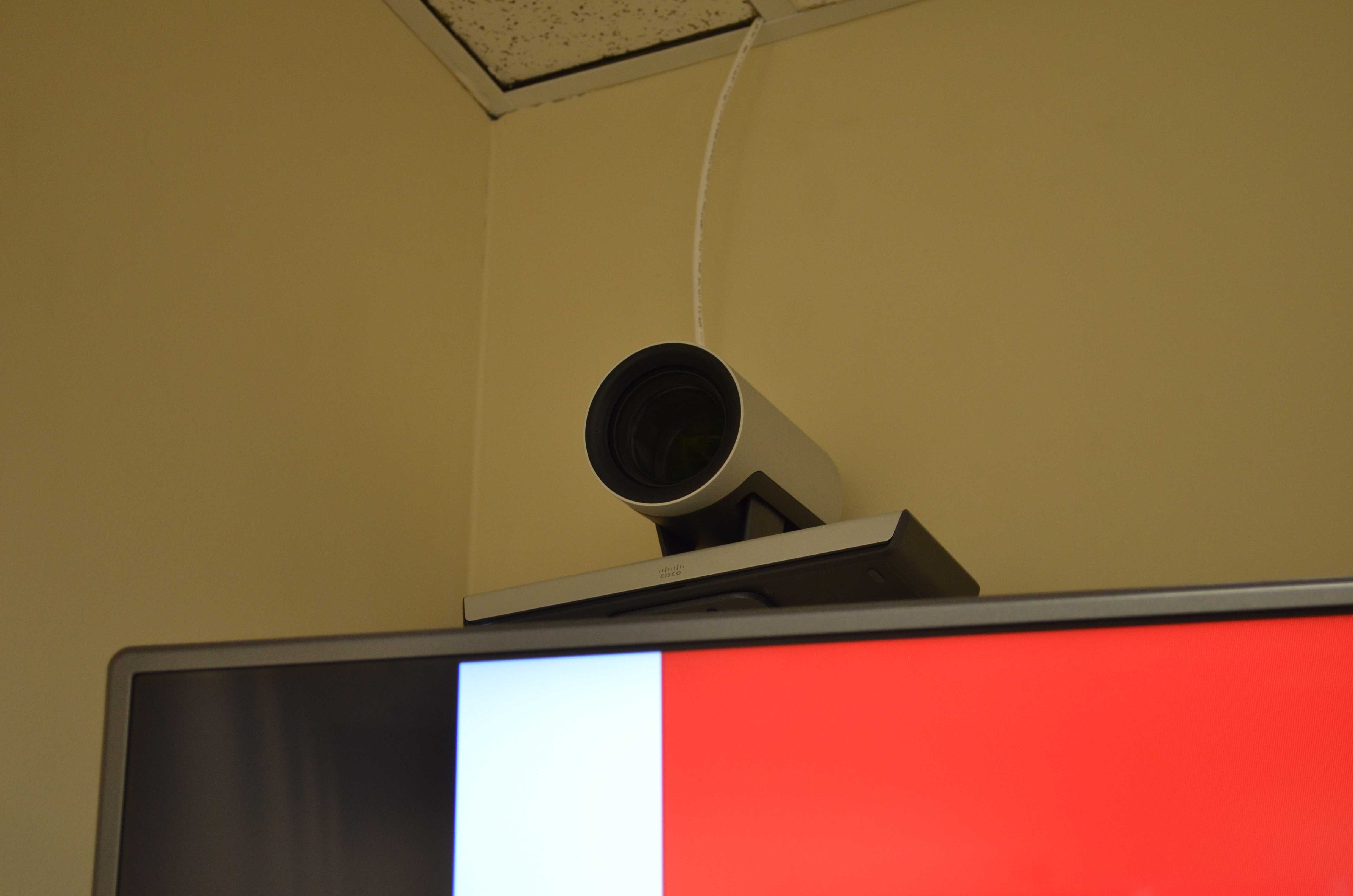
Marmet says one of the biggest advantages of the classroom is its real-world application. He explained that as the economy continues to expand globally, more meetings include people calling in from all over the world.
“Gaining this experience is a nice stepping stone to interacting with that technology,” Marmet said.
While there are only two courses taking place this semester, Nesbitt says by the fall semester, the plan is to have eight to ten classes taking place there.
As technology evolves and education changes, Nesbitt says it is important to make sure UC stays unique.
“A lot of programs say they offer blended teaching,” she said. “Ours is going to remain really unique. It’s about interactivity. It will keep us differentiated in the market.”































































